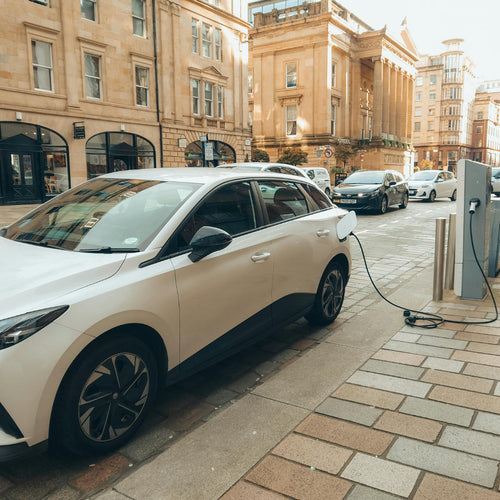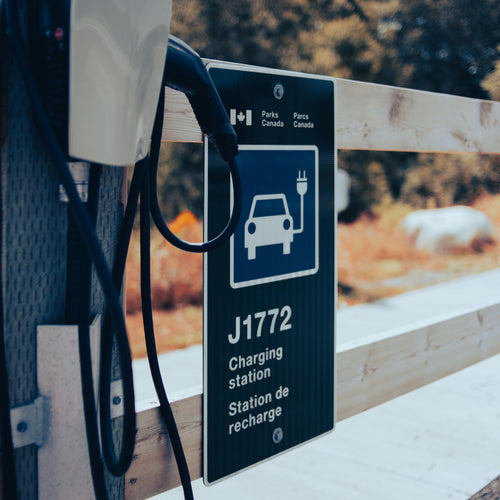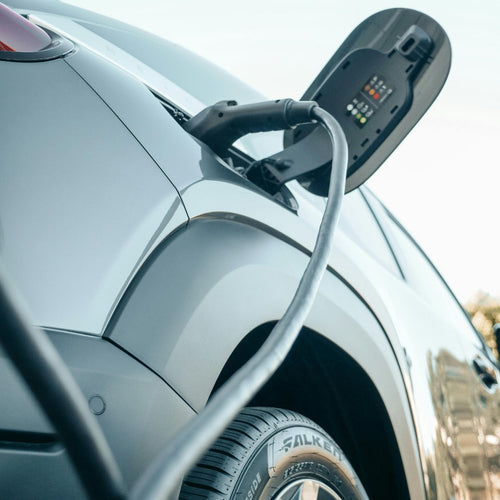Choosing the right amperage (amps) for charging your electric vehicle (EV) is key to ensuring efficient and safe charging. Whether you're considering a home charging setup or using public chargers, understanding how amps affect charging speeds and the overall process is essential. In this article, we'll dive into how amps impact EV charging, explore the different levels of chargers, and help you determine the right amperage for your needs.
What Are Amps?
Amps (amperes) measure the flow of electrical current through a conductor. Essentially, the higher the amperage, the more electricity can flow through the charging system to power your vehicle. This directly impacts the rate of your EV charges, with higher amps resulting in faster charging. For example, a 40-amp charger will charge your EV faster than a 16-amp charger due to the higher amperage, which delivers more power.
How Are Amps Used in EV Charging?
Amps are central in determining the charging power, impacting how fast your EV's battery can be charged. The power (in kilowatts, kW) delivered during charging is calculated using this formula:
Charging Power (kW)=Voltage (V)×Amps (A)/1000
For example, if you have a Level 2 charger running at 240 volts and drawing 30 amps, the power output will be:
Charging Power=240×30/1000=7.2 kW
This means your vehicle would receive 7.2 kW of charging power per hour.

How Many Amps Do My EV Charger Need?
The requirement of amperage depends on several factors, including the capacity of your vehicle's battery, the charging speed you prefer, and the electrical system of your home.
- Smaller batteries (e.g., Nissan Leaf): Typically use 16-24 amps chargers.
- Mid-sized batteries (e.g., Tesla Model 3): Often require 32-40 amps chargers.
- Larger batteries (e.g., Tesla Model S, Ford F-150 Lightning): Typically need 48 amps or higher chargers to ensure fast charging.
Battery Size and Charging Needs
|
Vehicle Model |
Battery Size (kWh) |
Typically Charger Amps |
Estimated Charging Time |
|
Nissan Leaf |
40-62 kWh |
16-24 amps |
10-15 hours |
|
Tesla Model 3 |
54-82 kWh |
32-40 amps |
8-10 hours |
|
Ford F-150 Lightning |
98 kWh |
40-48 amps |
10-12 hours |
|
Tesla Model S |
85-100 kWh |
40-48 amps |
8-10 hours |
How Many Amps for Level 1 Charging?
Level 1 charging uses a standard 120-volt household outlet and typically operates at 12 to 16 amps. While convenient, it provides slower charging rates, typically ranging from 1.4 kW to 1.9 kW.
Estimated Charging Time for Level 1
|
Vehicle Model |
Battery Size (kWh) |
Level 1 Charging Power (kW) |
Estimated Charging Time |
|
Nissan Leaf |
40-62 kWh |
1.4 kW |
30-40 hours |
|
Tesla Model 3 |
54-82 kWh |
1.9 kW |
40-50 hours |
When to Use Level 1 Charging
Level 1 charging is best for drivers who don't need to charge quickly and can leave their vehicle plugged in overnight. It's not ideal for fast recharges or those with larger EV batteries.
How Many Amps Do Level 2 EV Chargers Pull?
Level 2 chargers operate at 240 volts, delivering a faster charge compared to Level 1. Level 2 chargers typically pull 16 to 80 amps, with 40 amps and 48 amps being the most common for home installations.
Charging Power for Level 2
|
Amps |
Voltage (V) |
Charging Power (kW) |
Ideal Use Case |
|
16 A |
240 V |
3.8 kW |
Small batteries |
|
20 A |
240 V |
4.8 kW |
Medium-sized batteries |
|
32 A |
240 V |
7.7 kW |
Larger batteries |
|
40 A |
240 V |
9.6 kW |
Large batteries, faster charging |
|
48 A |
240 V |
11.5 kW |
High-performance EVs |
A 48-amp charger is often the sweet spot for most households, providing good charging speeds without requiring major electrical upgrades.
How Many Amps for Level 3 DC Fast Charging?
Level 3 charging, also known as DC Fast Charging (DCFC), is the fastest charging option available for electric vehicles. Level 3 chargers can deliver power at rates ranging from 50 kW to over 350 kW, with amps ranging from 200A to 500A or more. The actual amperage depends on the charging station's power output and the specific vehicle's battery system.
For example, a 150 kW DC Fast Charger might use about 400 amps at 400 volts, resulting in a charging rate of about 150 kW. This allows electric vehicles to charge rapidly—often reaching 80% charge in 20-30 minutes depending on the vehicle and the charger's power output.
Charging Speed for Level 3
Ideal Use Case for Level 3 Charging
Level 3 charging is suitable for long-distance travel and commercial use, where quick charging is necessary to minimize downtime and keep drivers on the road. These chargers are less for residential use.
Why Level 3 Charging Isn't for Home Use
While Level 3 chargers are fast, they are typically not applied for home charging. The infrastructure and costs associated with installing a DC Fast Charger at home are prohibitively high, and most homes do not have the electrical capacity to support such high amperages. Therefore, Level 2 chargers are much more common for personal use.
What Amp Rating Should I Choose for My Home Charger?
When selecting the amperage for your home EV charger, you'll need to balance between charging speed and your home's electrical capacity. Here's a breakdown of what's typically available:
- 16-32 amps: Best for small and medium vehicles or slower charging needs.
- 40-48 amps: Ideal for fast charging, especially for larger EV batteries or frequent charging.
- 80 amps: Not commonly needed for residential setups, but ideal for extremely fast charging or high-power EVs.
Why 40 and 48 Amp Level 2 EV Chargers Are Today‘s Standard?
40-amp and 48-amp chargers are quickly becoming the industry standard due to their efficient and balanced performance. A 40-amp charger provides about 9.6 kW of power, which typically allows most EVs to fully charge overnight (within 8-12 hours). A 48-amp charger offers even faster charging, which is perfect for larger EVs or households with multiple EVs.
These chargers are cost-effective and provide a good return on investment, especially considering that larger EV batteries are becoming more common.
Are 80-Amp EV Chargers Worth It?
80-amp chargers provide charging speeds up to 19.2 kW, but they are generally overkill for most residential installations. Installing an 80-amp charger requires significant upgrades to your home's electrical infrastructure, making it expensive and unnecessary for most homeowners.
When Should You Consider an 80-Amp Charger?
An 80-amp charger is typically used in commercial settings or for homes with large electric vehicle fleets. It's also beneficial for owners of high-performance EVs with very large battery capacities. However, for most EV owners, a 48-amp charger is more than sufficient.
|
Amps |
Maximum Charging Power (kW) |
Ideal Use Case |
|
40 A |
9.6 kW |
Standard home charging |
|
80 A |
19.2 kW |
High-demand, commercial use |
Conclusion
Selecting the appropriate amperage for your EV charger is crucial for optimizing charging times and ensuring the longevity of your battery. Most homeowners will find that a 40-amp or 48-amp Level 2 charger offers the best combination of performance, cost, and ease of installation. If you have a high-performance vehicle or need to charge quickly, a 48-amp charger might be a more suitable solution. An 80-amp charger is typically only for specific use cases, such as commercial or fleet charging.
Ultimately, consider your vehicle's battery size, how often you need to charge, and your home's electrical capacity when choosing the best charger for your needs.











Leave a comment
This site is protected by hCaptcha and the hCaptcha Privacy Policy and Terms of Service apply.